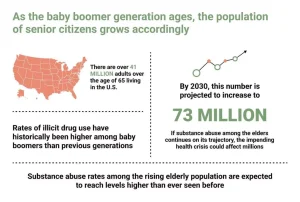
As such, problem solving strategies and programming and rehearsal of steps to broader goal attainment may need to be provided, depending on the skills available to the patient. As implied above, CBT for substance use disorders varies according to the particular protocol used and—given the variability in the nature and effects of different psychoactive substances—substance targeted. Consistent across interventions is the use of learning-based approaches to target maladaptive behavioral patterns, motivational and cognitive barriers to change, and skills deficits. Robust evidence suggests the efficacy of classical/traditional CBT compared to minimal and usual care control conditions.
CBT For Co-Occurring Disorders
Several behavioural strategies are reported to be effective in the management of factors leading to addiction or substance use, such as anxiety, craving, skill deficits2,7. A relative limitation of CM is the availability of funds for providing the reinforcers in clinical settings. The establishment of job-based reinforcements have been introduced as alternatives to aid the clinical adoption of these methods.[21, 22]Also, contingency management strategies have also been incorporated into couple’s interactions (utilizing the reinforcers available to the couple) to aid the reduction of drug use (see below). This manuscript offers a narrative overview of CBT efficacy for consideration among researchers, clinicians, and other community stakeholders.
Is CBT Covered by Insurance?
The therapist and the client work in collaboration to seek alternate thought patterns. CBT therapist serves both as a teacher and a teammate and discusses the client’s stressors, irrational thoughts, and negative emotions. The exercises involve challenging negative thinking and developing positive coping skills for present and future use.

Clinical Elements of CBT for SUDs
The therapist therefore planned to improve his motivation for seeking help and changing his perspective about his confidence (motivational interviewing). Each of the five stages that a person passes through are characterized cognitive behavioral therapy as having specific behaviours and beliefs. Although empirical support for these interventions is promising, it is most often garnered through efficacy studies in which the treatment is carried out under optimal conditions.

- A key component of CBT for addiction is understanding how thoughts, emotions, and behaviors influence each other.
- His therapist identified strategies to enhance his motivation, to help him engage in therapy, deal with craving, reducing social anxiety, assertiveness and beliefs and positive expectancies about alcohol use, and confidence or sense of self-efficacy in remaining abstinent.
- Recovery from addiction is a challenging journey, filled with both triumphs and setbacks.
- When people are struggling with difficult situations, life stress, trauma, anxiety, depression, or other problems, they sometimes turn to substance or alcohol use as a way to manage.
- Given its ubiquity and longevity, CBT for addiction is increasingly becoming an umbrella term for interventions that include a range of cognitive and behavioral techniques (see Table 1).
- As you start healthier thoughts and behaviors, you start associating them with healthier emotions, and this can start to become second nature the more you do it.
Petry and Martin [15] examined the addition of CM to standard community based treatment (methadone maintenance and monthly individual counseling) for cocaine and opioid dependent patients. CM in this study was delivered through a raffle format using a fixed ratio schedule in which drug-free urine samples afforded patients the opportunity to draw from a fish bowl for prizes valued between $1 and $100; patients in the CM condition achieved longer durations of abstinence through a 6-month follow up period relative to those who did not receive CM. The literature provides a somewhat complex narrative on the efficacy of combined CBT and pharmacotherapy. In the largest trial to date, the added benefit of the combination was not observed, but review data suggest some benefit, and particularly for adding pharmacotherapy to CBT for alcohol use disorder. Meta-analytic data also suggest that when choosing between medication management and a more comprehensive adjunct to pharmacotherapy, the more comprehensive intervention is preferred.

However, the additive effect of these combined interventions, despite clinically intuitive expectations of their compatibility, and even synergy, has not received conclusive support. In the present narrative review, we offer an overview of CBT efficacy for adult AOD and consider some key variations in application as well as contextual (ie, moderators) or mechanistic (ie, mediators) factors related to intervention effectiveness. Specifically, we will examine what might be considered “classical” or “traditional” applications based on Marlatt and Gordon’s17 seminal work but will also consider some integrative applications such as CBT in combination with MI, CM, and pharmacotherapy.
Alcohol use disorders
For example, the relative contribution of affective and social/environmental factors can vary widely across patients. A patient with co-occurring panic disorder and alcohol dependence may be experiencing cycles of withdrawal, alcohol use, and panic symptoms that serve as a barrier to both reduction of alcohol consumption and amelioration of panic symptoms. [56] Alternatively, patients without co-occurring psychological disorders may face different https://ecosoberhouse.com/ barriers and skills deficits, such as difficulty refusing offers for substances or a perceived need for substances in social situations. This article will break down the clinical conditions that CBT addresses, how it helps those struggling with substance use disorders and other mental health conditions, and who this type of treatment might be right for. The limitations of this study may reflect some of the key trade-offs in meta-analysis.
The CBT Model
In addition, certain populations, such as pregnant women and incarcerated patients, may present particular challenges. In each of these circumstances, the use of functional analysis to arrive at strong case conceptualization and the flexibile utilization of treatment components is important. For example, among individuals with low levels of literacy, the use of written homework forms may need to be replaced by alternative means of monitoring home practice (e.g., using simplified forms or having the patient call to leave a phone message regarding completion of an assignment). Several studies examined the effectiveness of CM as a supplement to traditional drug counseling. The studies initially provided relatively high rewards (as high as $1,000) for sustained abstinence from substance use [47-49], but recently, effectiveness studies have focused on providing low-cost CM as a more feasible addition to traditional counseling programs.


Recent Comments